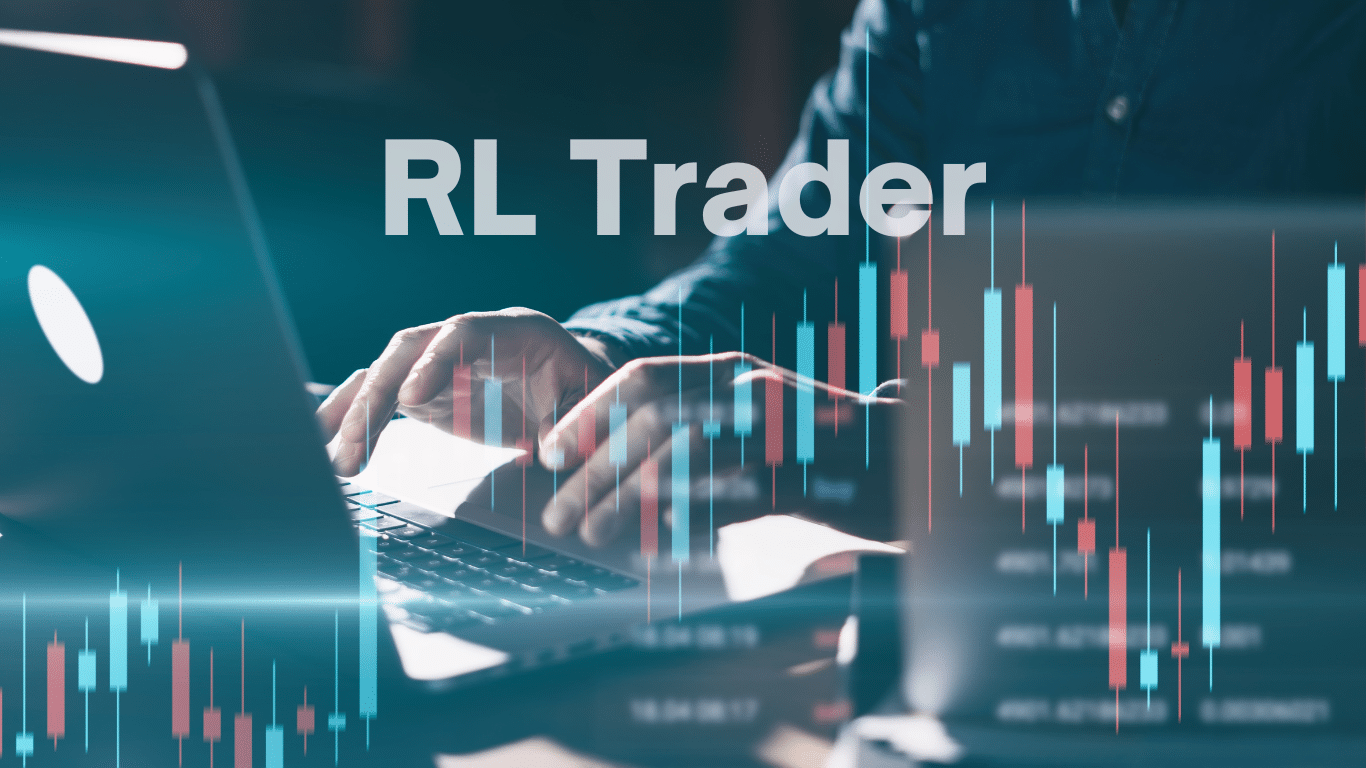Reinforcement learning (RL) is a form of machine learning where agents learn to make decisions by interacting with the given environment and receiving feedback in the form of rewards or penalties. The agent aims to set a policy that maximizes its cumulative reward over time. RL is commonly used in fields such as robotics, gaming, and autonomous systems.
RL can be used in trading to develop RL trader algorithms that learn to make trading decisions based on market data. RL trader algorithms typically use historical price data and other relevant information, such as news and social media sentiment, to make trading decisions. The agent receives a reward or penalty according to its trading decisions, and it adjusts its policy accordingly to maximize its cumulative reward.

RL trader algorithms can be used for a variety of trading tasks, such as asset allocation, portfolio optimization, and risk management. For example, an RL trader algorithm could learn to dynamically adjust a portfolio’s allocation based on market conditions, such as changes in volatility or correlations between assets. RL trader algorithms can also be used for high-frequency trading, where the agent makes real-time trading decisions based on market data.
One of the main advantages of RL trader algorithms is their ability to adapt to changing market conditions. RL algorithms can learn from experience and adjust their policies accordingly, which can be particularly useful in highly dynamic and complex markets. However, developing practical RL trader algorithms requires expertise in machine learning and trading and access to high-quality data and computational resources.
How can RL trader algorithms be trained to make profitable trades in a volatile market?

- Reward function: The reward function is a critical component of the RL algorithm, as it determines the agent’s learning objective. In a volatile market, the reward function should incentivize the agent to make profitable trades while penalizing risky or unprofitable trades. For example, the reward function could be designed to give higher rewards for trades that result in high returns while penalizing trades that result in losses or high volatility.
- State and action spaces: Selecting state and action spaces is also essential in developing practical RL trader algorithms. In a volatile market, the state space should include relevant information such as historical price data, volatility, and other market indicators that could impact the agent’s trading decisions. The action space should enable the agent to make informed trading decisions, such as choosing which assets to trade, when to enter or exit positions, and how much to invest in each trade.
- Exploration and exploitation strategies: In a volatile market, the agent must balance exploration and exploitation to make profitable trades. Exploration refers to the agent’s ability to explore new trading strategies and learn from its experience. In contrast, exploitation refers to the agent’s ability to maximize profits by using existing knowledge. The balance between exploration and exploitation is techniques such as epsilon-greedy exploration. The agent selects a random action with a small probability and chooses the action with the highest expected reward with a high probability.
Training RL trader algorithms to make profitable trades in a volatile market requires careful consideration of the reward function, state and action spaces, and exploration and exploitation strategies. By designing effective algorithms that balance risk and reward, traders can leverage the power of RL to navigate volatile markets and make profitable trades.
What are the advantages of using RL trader algorithms over traditional trading strategies?

- Adaptability: RL trader algorithms can adapt to changing market conditions and learn from experience. Traditional trading strategies are typically based on fixed rules and assumptions and may be unable to adjust to dynamic market conditions. On the other hand, RL algorithms can learn from experience and adapt their policies accordingly, which can be particularly useful in volatile or uncertain markets.
- Efficiency: RL trader algorithms can process vast amounts of market data and make trading decisions in real time, leading to more efficient and timely trades. Traditional trading strategies may require significant manual analysis and decision-making, which can be time-consuming and less efficient.
- Objectivity: RL trader algorithms make trading decisions based on data and algorithms, which can reduce the impact of emotions and biases on trading decisions. Subjective factors such as personal opinions or emotions may influence traditional trading strategies, leading to suboptimal trading decisions.
- Flexibility: RL trader algorithms can be customized to meet traders’ specific needs and goals. Traditional trading strategies may be limited by fixed rules and assumptions and may not be able to adapt to different trading goals or market conditions.
- Performance: RL trader algorithms have demonstrated strong performance in various trading tasks, including portfolio optimization, asset allocation, and risk management. RL algorithms can learn complex patterns and relationships in market data that may not be apparent to human traders, leading to better trading decisions and improved performance.
Overall, using RL trader algorithms offers several advantages over traditional trading strategies, including adaptability, efficiency, objectivity, flexibility, and performance. As a result, many traders are turning to RL algorithms to gain a competitive edge in dynamic and complex markets.

